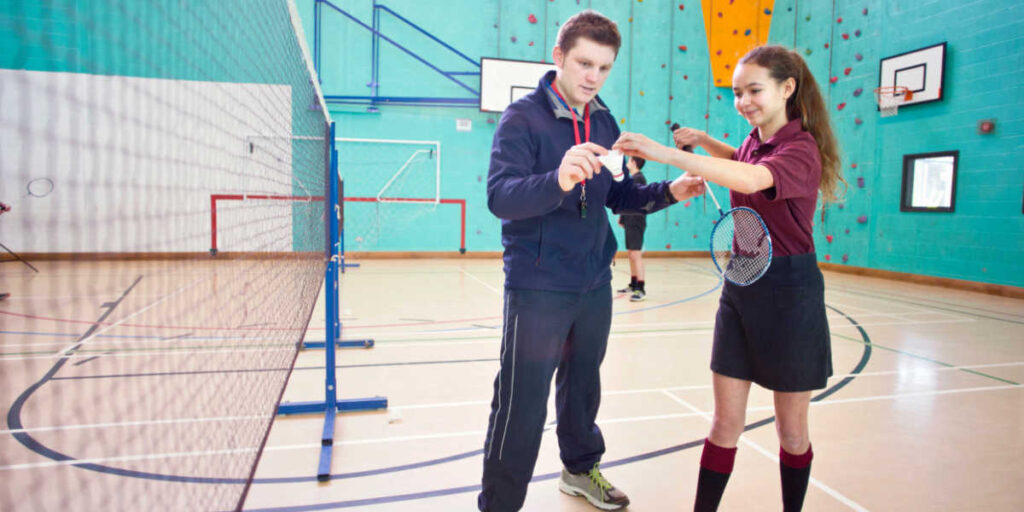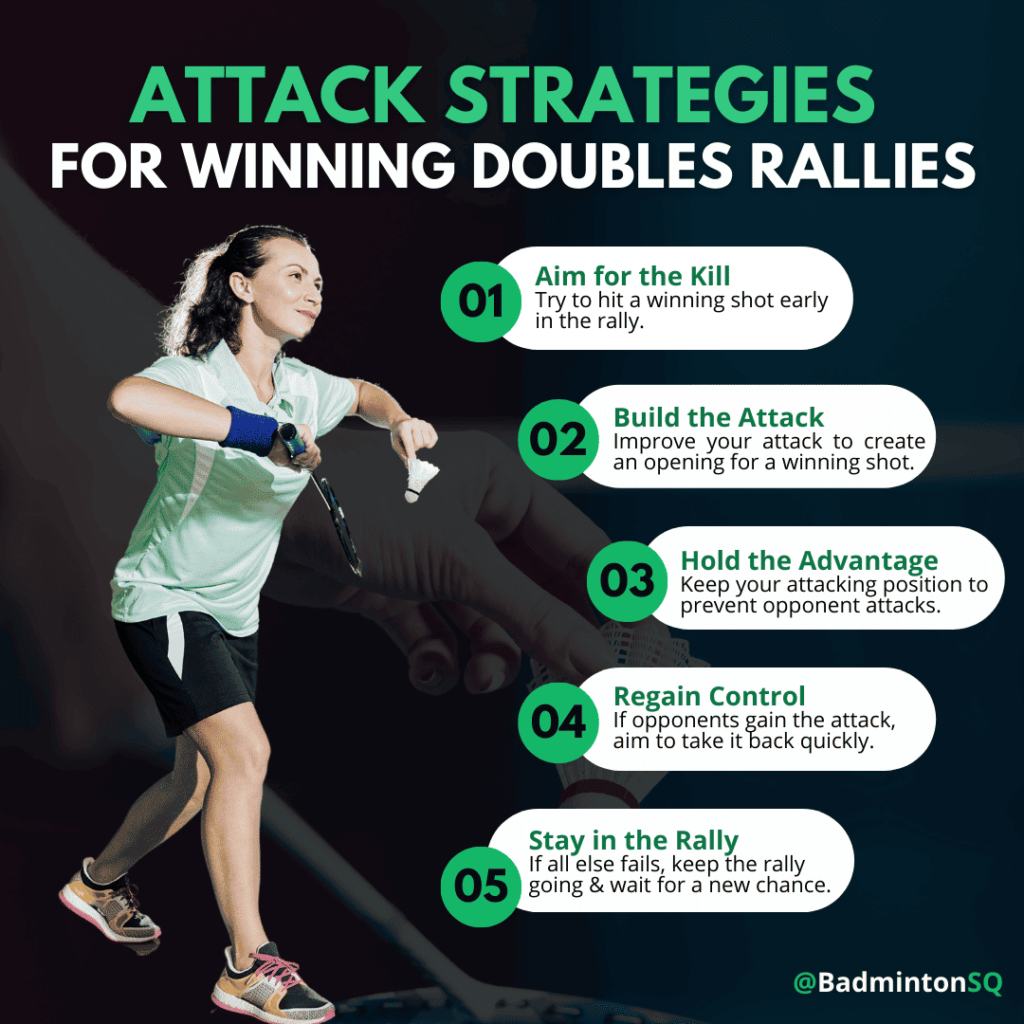Badminton is a complex game with too many moves and tactics. Each move lands differently and achieves a different effect on the opponent. When you begin playing badminton, it’s not possible to master all of these tactics.
But there are a few important moves that you can learn and master at the beginner’s level. This article aims to provide you with the means to learn those badminton tactics for beginners and apply them on the court.

How many categories are there in badminton?
There are 2 main categories in Badminton i.e Single and Double
- In Singles – Played with one player on each side. It can be either men’s singles or women’s singles.
- In Doubles – Played with two players on each side. This Double category should be categorized into 3 parts:
• Men’s Doubles – Two male players compete against another pair
• Women’s Doubles – Two female players compete against another pair
• Mixed Doubles – A male and a female player team up against another mixed pair
The most important thing to note here is that the tactics for single badminton mostly differ from those used for a doubles game. So, we have divided this article into two sections to make it more scannable for you.
Singles Badminton: Essential Tactics for Beginners
This section covers some of the common badminton tactics for beginners that are vital in a singles match. You will learn how to serve to gain an advantage, how to force your opponent to move, and how to avoid that from happening to you.
Serving
There are three types of services most useful in a single badminton game –
- Low Serve
- High Serve
- Flick Serve
You must first analyse your opponent’s weakness to decide which serve you want to play. If they have difficulty playing around the net, a low serve would be a great choice.
If they frequently miss your shots when you do a high serve, keep doing it. But it might not be ideal if they have a violent smash.
You can even use deception techniques where you lead your opponent to believe you are doing a low serve but deliver a high serve and vice versa. Your opponent will be surprised and won’t have enough time to cover the court.
The flick serve must be used when you don’t want the opponent to gain an advantage by anticipating your low serve. In this service, you do a low serve with a flick at the end. This flick will land your shuttlecock wide to the corner of the field.
Important: Keep the flick serve high enough that the opponent won’t be able to intercept it in the middle of the field.
Create Movement Pressure on the Opponent
In a singles game, you must make your partner dance around the court as much as possible. Hit two consecutive shots at opposite ends of the court, and your opponent will be forced to move a lot. This will achieve three things –
- Your opponent will get tired quickly from all the movement.
- They won’t be able to put as much energy into their shots as they would have.
- They are more likely to miss a hit because they have a lot of space to cover.
Always Return to the Center Position
You are responsible for covering the entire court in a singles match. You don’t have a partner to cover for you. So, it’s important that you don’t miss any section. How will you achieve that? – By assuming the center position.
After every shot, return to the center of the court. This way, you won’t miss a rear-court shot if you are in the front and vice versa or a left-court shot if you are on the right and vice versa.
Pro Tip: In case you don’t have the time to return to the center position, stay on the same side of the court as you played the last shot.
Badminton Doubles Essential Tactics: Serving, Positioning, and Gaining the Attack
This section is entirely dedicated to badminton tactics for beginners in a doubles game. You will first discover the best way to serve to get in an attacking position, then you will look at the formations that you and your partner must maintain while playing attack and defence, and finally, you will learn how to gain the attacking advantage and use it to win a rally.
Badminton Double Serving
In a badminton doubles game, mostly two types of services are preferred –
- Low serve
- Flick serve
The low serve is given the highest preference in a doubles game because it creates an opportunity for your partner to attack. And that’s the whole point of a service in a doubles match – setting up your team for attack.
Serve in a way that your opponent has to play a weak shot and doesn’t get a chance to attack. This will give your team the chance to attack first.
Important: You and your partner should discuss this tactic before the game, and there should be good coordination between you two during the game. Because if your partner returns your opponent’s weak shot with another weak shot, the opponent gets the chance to attack first. That’s not in your benefit.
So, we have established that low serve is the best option to get the lead. But your opponent is likely to learn your move. You need to mix it up a bit. Delivery a flick serve randomly so your opponents are caught off guard.
Wide serves are generally not a good idea because they give your opponents more attacking options. Avoid drive serves altogether – they’re risky and don’t work well against good players.
Badminton Doubles Positioning
At any point in the game, you have to either achieve the attacker’s position or the defender’s position. Both these positions demand different placement of players in the field.
Attacking
While you are attacking in doubles badminton, one partner needs to be in the rear court and the other in the front court.
- The rear court partner covers all the rear court shots and plays drop shots or smashes.
- The front-court partner defends the net shots and covers the mid-court. They are also responsible for playing shots that provoke another lift.
Defending
While you are defending in a doubles game, your partner and you need to stand side by side. The aim is to cover the entire court from a single line. If you are not able to cover the court, you will likely lose the rally.
In this same position, you have to look for an opportunity to get the opponents to make a lift so you get to attack. This will put you in the attackers’ position, and one of you can step to the frontcourt and assume the attacking position.
Mastering the Attack: Badminton Doubles Strategy for Winning Doubles Rallies in Badminton
We have established that in a doubles game, you need to be the first to attack in a rally to increase your chances of winning. You need to stick to that. Go for net kills and smashes and hit that winning shot.
- In a doubles rally, your first aim should be to hit the winning shot.
- If you are not getting a chance for that, try to improve your current attack and create an opportunity to hit a winning shot.
- If that’s not possible, at least maintain your current attacking position so the opponents don’t gain an attack.
- In the worst case that your opponents manage to get in the attacking position, your first aim should be to regain the attack.
- If the opponents are too fierce to let you take over, try to make a lift. This will force the opponent to start another attack, and hopefully, that will be weaker than the last one so you can regain control.
- Despite all this, if your opponents have the upper hand, give your best to keep the rally going.

Important: Take the winning shot when you get the chance without thinking twice. You might not be successful, but you at least tried to win a losing battle.
Conclusion
Now you know some of the best badminton tactics for beginners. It’s time to take them to the court. Practice each of these tactics individually as well as in combination with one another. Understand that these are just the basics, and there’s much more to cover.
Also, practice distinguishing between single and double tactics. One is not going to help you win the other match. So, to avoid mixing them, make sure you get your badminton game strategy straight.
Must Read: How to Become a Better Badminton Player?
Frequently Asked Questions
Can we self-teach badminton?
Yes, you can self-teach badminton by learning all the basic tactics. But it’s always better to have a coach who can point out your mistakes and suggest ways to improve.
How do beginners get better at badminton?
Beginners get better at badminton by constantly practicing and learning all the basic rules. Once they master the basic techniques, they can move on to learn complex game strategies.
Which is the best strategy to use in a badminton game?
There’s no single best strategy that can win you every game because each opponent has a different playing style. The best you can do is learn your opponent’s gameplay and try to use it against them.
How can I practice badminton at home alone?
You can practice badminton at home alone by hitting the shuttlecock against a wall. This will help you practice your service. You can dedicate time to mastering your backhand and forehand.
What are age based categories for different competitions in badminton?
Seniors – Typically for players aged 19 and above
Juniors – Players under 19 years old
Sub-Juniors – Players under 16 years old
Midgets – Players under 13 years old
Mini – Players under 10 years old
Veterans – Usually for players aged 35 and above
Best way to improve my badminton skills?
Try and practice at least 2-3 times a week, by yourself or with a partner and work on specific skills with a clear goal in mind. The faster way to improve your skills overall is to just train more regularly with purposeful practice.
